
Construction work on the Hassan Dam in Abyan Governorate, July 19, 2025 (South24 Center)
آخر تحديث في: 13-08-2025 الساعة 4 مساءً بتوقيت عدن
|
|
The Hassan Dam is a sustainable source for storing floodwaters coming from Wadi Hassan (Hassan valley) and distributing it through irrigation channels across the Abyan Delta, which will help enhance water stability and restore confidence in agricultural activity.
Mohammad Khalid (South24 Center)
The Hassan Dam project in Yemen’s Abyan governorate stands as one of the most ambitious water harvesting initiatives in Southern Yemen. It carries great hopes of restructuring the region’s agricultural landscape by establishing a regulated, sustainable water reserve, enhancing irrigation efficiency, and reducing the losses caused by uncontrolled torrents flowing into the sea. Although the dam remains incomplete, its revival over the past two years has reignited debate around its feasibility and its potential to restore Abyan’s historic role as a key agricultural provider. This is in light of the promising technical and economic figures regarding its storage capacity, irrigated area, and the number of direct beneficiaries.
The initial idea of constructing the dam dates back to the 1970s, when public and official demands grew in southern Yemen for a “national” project that would be comparable to the Marib Dam in the North in terms of water and agricultural security. However, the project remained a series of unfulfilled promises until 2008, when a funding agreement was announced with the United Arab Emirates for a dam in the Hassan Valley of Khanfar District. The government contracted an Indian company for engineering studies and consultancy services, while execution was assigned to a Chinese firm. Work was officially scheduled to start in 2010 and be completed within four years.
That timeline passed without any substantial implementation. The outbreak of war in 2015 completely halted the project, freezing the Emirati grant. The dam faded once again from public discourse until its file resurfaced years later.
In early 2021, with Salem al-Socotri assuming the role of Minister of Agriculture, Irrigation and Fisheries, the Hassan Dam returned to the forefront of stalled development files. The ministry faced compound challenges: restoring funding commitments, regaining technical confidence, and institutionally strengthening the project to prevent further setbacks.
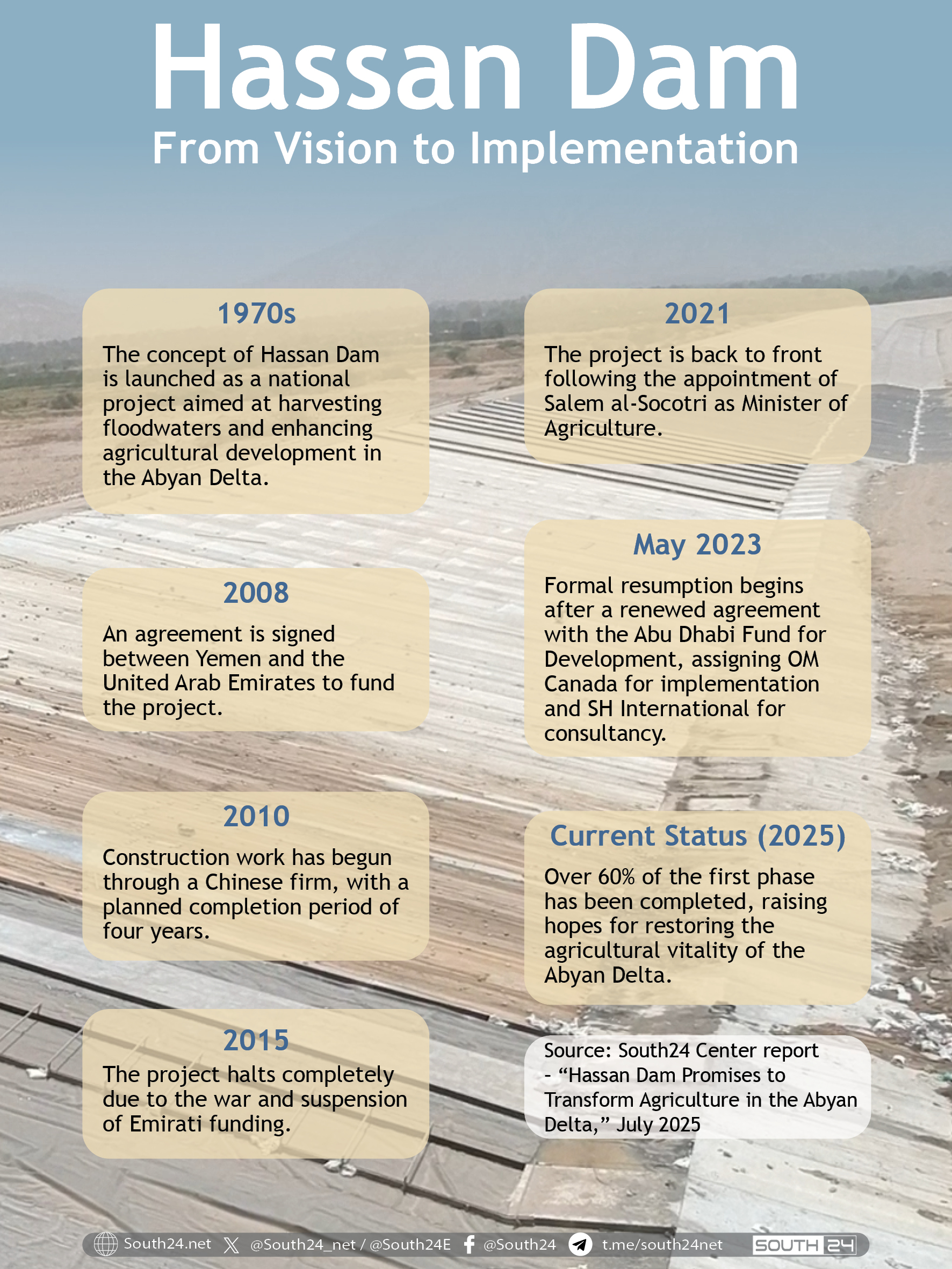
Minister al-Socotri and his team succeeded in persuading the Emirati side to double the funding, which culminated in the signing of a new implementation agreement and the official resumption of work in May 2023. To ensure robust technical oversight, Deputy Minister of Irrigation, Engineer Ahmed al-Zamki, was assigned with direct supervision, while SH International was selected as the project's consulting firm and Canada’s OM Group was contracted for construction. The first phase was allocated for completion in three years, with a second phase to follow immediately upon its conclusion.
Specifications and Implementation Challenges
Technically, the dam is being built over an area of nearly three kilometers and consists of a primary embankment structure with a concrete-faced rockfill segment of approximately half a kilometer, featuring three gates for controlled water discharge into irrigation canals. It also includes a 2.5-kilometer earthen barrier and 1.5 kilometers of gabion protection, along with complementary construction facilities.
Today, the Hassan Dam represents a real turning point in Abyan’s agricultural development. According to Engineer Ahmed al-Zamki, the first phase has surpassed 60% completion, despite intermittent delays caused by the late arrival of imported equipment, as well as administrative problems related to the delays in granting customs and tax exemptions.
“Despite these challenges, we are adhering to a detailed timeline and aim to finish Phase One within the set period of 36 months,” al-Zamki told ‘South24’.
From a technical perspective, the project confronted outdated design complexities. Now the geophysical studies have been updated and the designs modified with support from Egyptian dam experts to ensure the infrastructure aligns with international standards for large-scale dams. Al-Zamki emphasized that these improvements will enable the dam to store up to 19.5 million cubic meters of water and distribute it efficiently via modern gates and canal systems.
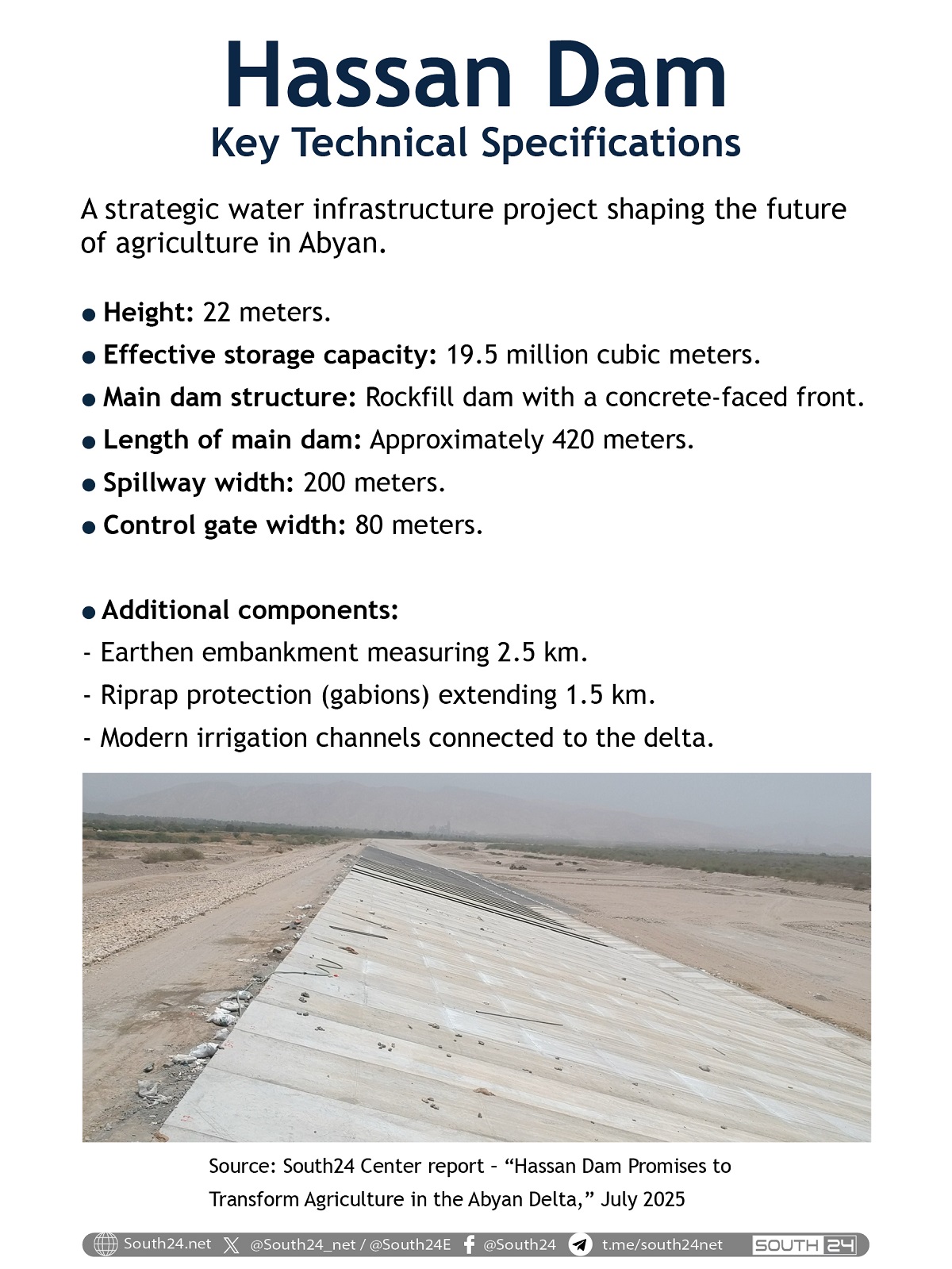
Despite the remarkable progress achieved in the implementation of the Hassan Dam project, administrative and financial challenges threaten its long-term sustainability. Al-Zamki notes that the Finance Ministry has ceased funding the project’s management budget since early 2023, undermining the capacity of technical teams to carry out essential oversight.
He warned: “The project requires high-level operational management to regulate water and flood control, and any budget shortfall directly impacts the quality of these operations.”
Regarding external financing, the Abu Dhabi Fund for Development provides 100% of the financing, after waiving Yemen’s required 20% contribution (approximately $15.6 million). Al-Zamki described relations with the fund as “excellent and growing”, noting that the ongoing coordination has helped overcome major obstacles, including the return of $16.5 million previously paid to the Chinese contractor before the project was halted. He added: “The successful execution of Phase One is a strong indicator for advancing to Phase Two, provided implementation continues unimpeded.”
Administratively, the project is subject to rigorous oversight from the Ministry of Agriculture, Abyan’s local authorities, and the consulting firm SH International, which monitors the quality of material and on-site implementation. International experts, including Egyptian dam specialists, were enlisted to verify adherence to global engineering standards. “Each construction phase undergoes meticulous technical review to ensure long-term safety of the dam,” al-Zamki said.
However, the challenges go beyond funding and oversight. The project has faced over 10 security incidents—including abductions, road blockades, and equipment theft—that disrupted construction. Security measures have been strengthened in cooperation with local authorities. Al-Zamki commented: “Project security is no less critical than its funding. Any interruption means substantial losses in terms of both time-line and cost.”

To address these security challenges, a military force from the Southern Giants Brigades was deployed to safeguard the dam’s construction, as observed by the ‘South24’ field team during its documentation mission. Vice President of Yemen’s Presidential Leadership Council and Southern Giants commander Abdelrahman al-Mahrami has played a key role in supporting major initiatives such as the Hassan Dam and Aden’s solar power station, with his forces securing these strategic projects.
Economic and Social Factors
Authorities supervising the Hassan Dam expect it to irrigate over 14,000 hectares of farmland and substantially increase crop productivity. According to Engineer Ahmed al-Zamki, the availability of stored water will empower farmers to diversify crops and boost yields—strengthening food security and reducing reliance on imports.
“This project will revive vast areas of neglected farmland, opening up prospects for cultivating strategic crops like cereals and long-staple cotton,” al-Zamki said.
Agricultural expert Abd al-Qadir al-Samiti, representative of the National Association for Scientific Research and Sustainable Development in Abyan, described Hassan Dam as a “renewed hope for the revival of the Abyan Delta’s agriculture.” He noted: “This region has long been among Yemen’s most fertile, but years of drought, climate change, and lack of infrastructure have made it urgent to find sustainable solutions for water harvesting and its regulated distribution.”
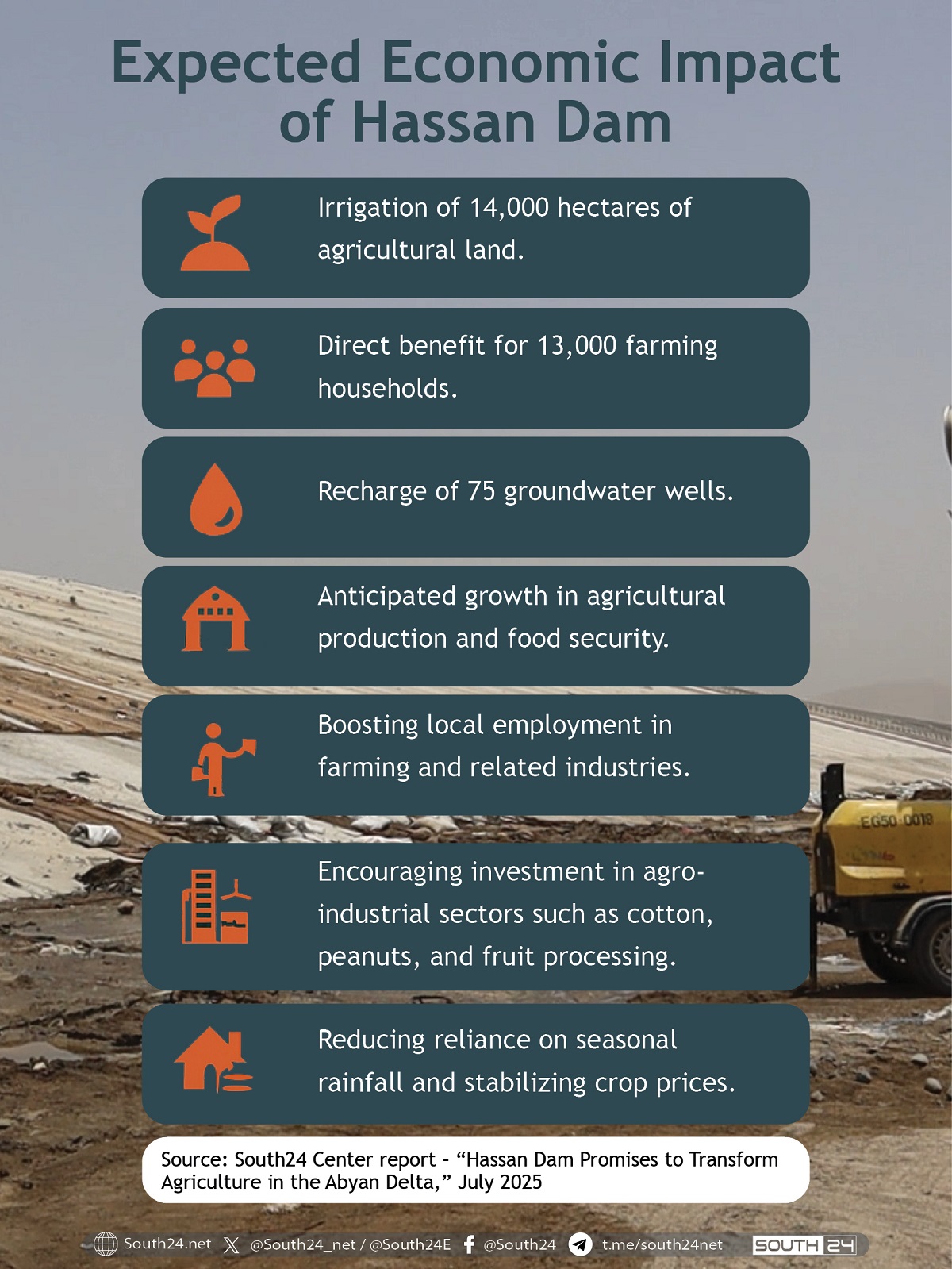
He told ‘South24’: “Hassan Dam serves as a sustainable reserve for storing floodwaters flowing from Wadi Hassan (Hassan valley) and channeling it systematically across the irrigation network of Abyan Delta, to enhance water stability and restore confidence in agricultural practices that suffered due to inconsistent floods and water losses.” He added: “The dam will be a real driver for agricultural revitalization and for replenishing the groundwater basin beneath the delta.”
According to al-Samiti, the dam’s completion will support the return of favorite Abyan crops like sorghum, maize, millet, sesame, long-staple cotton, peanuts, besides animal fodder. Vegetables such as tomatoes, onions, peppers, watermelon, melons, zucchini, sweet potatoes, and leafy greens will also flourish, alongside fruits like mango, papaya, lemon, banana, and guava.
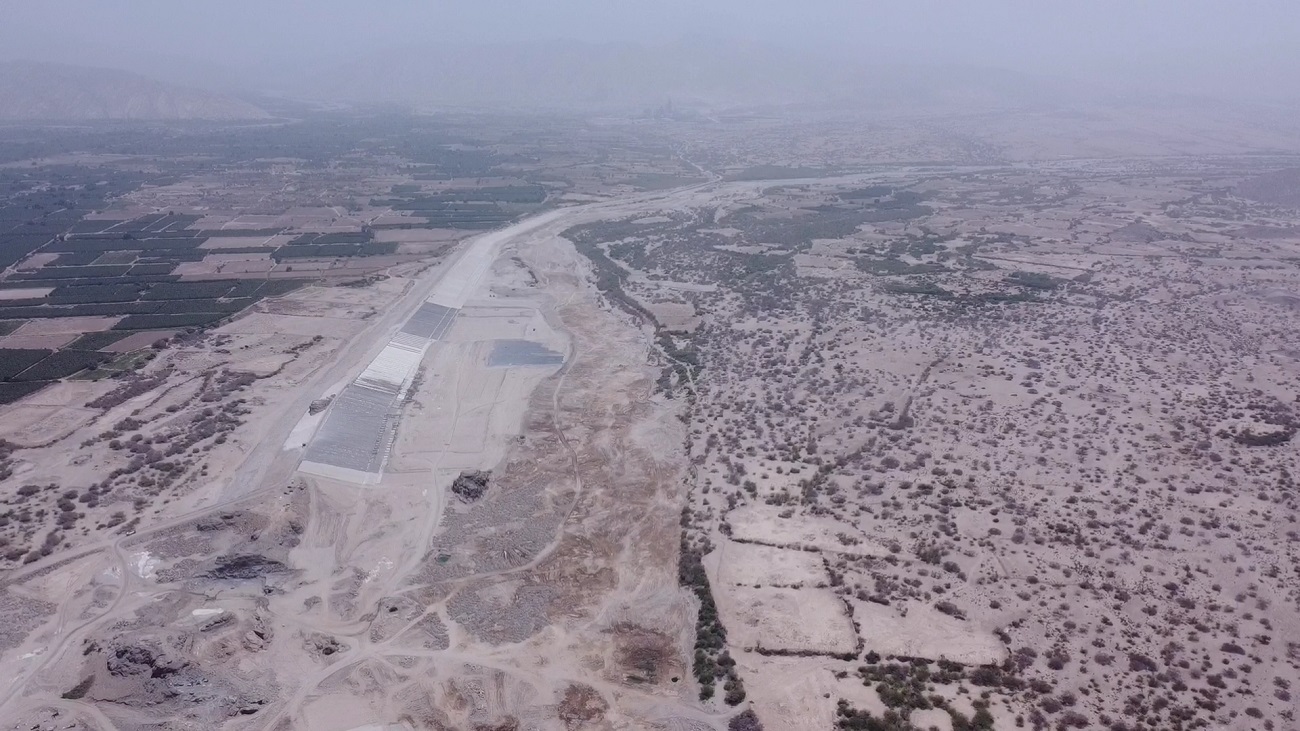
An aerial photo of Hassan Dam in Abyan Governorate, July 19, 2025 (South24 Center)
The dam is designed to store 19.5 million cubic meters of water, recharge 75 wells in Abyan and nearby areas, and directly benefit an estimated 13,000 households. Its indirect gains include job creation throughout the construction and operational phases. It is expected to transform the irrigation practices from uncontrolled flood-based system to regulated water management, and reduce erosion, desertification, and seasonal flood damage.
Engineer Faraj al-Sharaa, Director of Field Extension and Plant Protection in Abyan, stressed the dam’s importance, telling ‘South24’: “Abyan lies in Yemen’s arid and semi-arid zone. Its annual rainfall barely reaches 100mm, making it highly dependent on the runoff from rain-heavy governorates like Ibb and al-Bayda, where rainfall exceeds 1000mm annually. For this reason, the dam represents an urgent economic and agricultural necessity for the Abyan Delta and the city of Khanfar in particular.”
He added: “The Abyan Delta’s farmland is suffering from severe water shortage, affecting even perennial crops like bananas. 2025 has been among the driest years in recent memory, as testified by veteran farmers.”
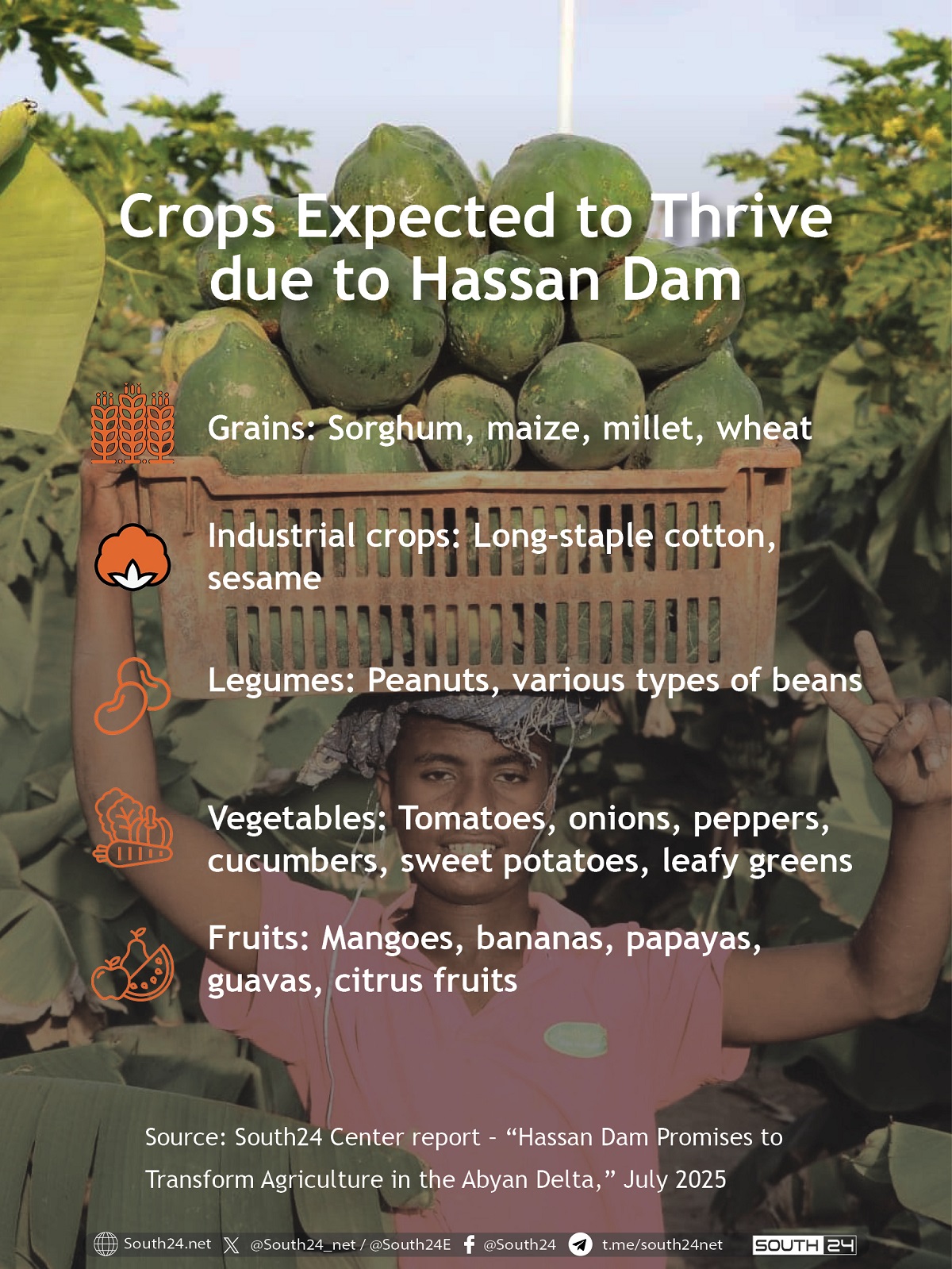
Economically, the dam is expected to increase farmers’ individual incomes through high-value crops and open new markets within and beyond Yemen. Stable year-round availability of water will help stabilize prices and reduce dry season losses. Farmer Rashad Hussein from Khanfar District said: “Banana, almond, and vegetable farms will return to full productivity, thanks to the dam—bringing jobs and steady income to our families.”
Socially, the project provides direct and indirect employment for thousands of locals. Around 80% of the construction workforce comes from Abyan, and additional jobs are expected in farming, agribusiness, and food processing.
The voices of Abyan’s farmers reflect the high hope pinned to the Hassan Dam. They see it as a lifeline to save their land from drought and reinvigorate neglected fields. Rashad Hussein told ‘South24’: “Water scarcity has destroyed banana farms in regions like al-Miyouh, Batis, and al-Hosn. These plants need abundant water, but some wells have completely dried up. We see the dam as a way to redirect the water torrents into irrigation canals rather than letting it go waste into the sea.” He added: “We need the project to be completed, and we urge the authorities to facilitate its progress.”
A nearby farmer, Asrar, noted that the dam is poised to become a turning point for the local agricultural sector. She told ‘South24’: “We once relied on plentiful rainfall, but today, we suffer from drought and dwindling yields. Our land grows everything from bananas to sesame and vegetables, but low water levels have hit productivity hard.” She added: “The dam will be a strategic reserve to save our land and crops.”
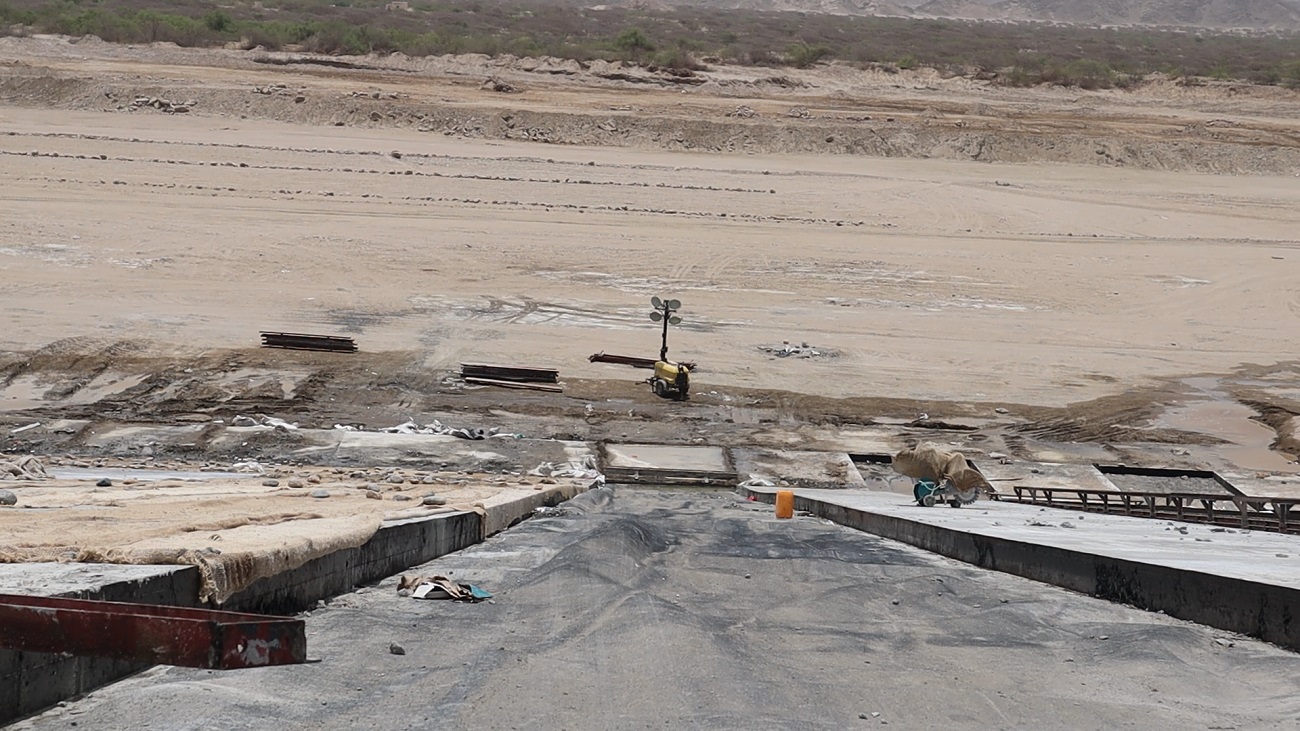
Construction work on the Hassan Dam in Abyan Governorate, July 19, 2025 (South24 Center)
Environmental Benefits
Hassan Dam’s role extends beyond agriculture and water security—it also serves as a protective barrier against seasonal floods that have long ravaged farmlands in the Abyan Delta causing heavy losses to farmers.
Engineer Ahmed al-Zamki, Deputy Minister of Agriculture and Irrigation, noted that controlling the torrent flow and storing the water in the dam would “shield thousands of hectares of agricultural land from erosion and help preserve Abyan’s fertile soils.”
The dam would also contribute to recharging the aquifers and raise groundwater levels, which will help curb saltwater intrusion from the nearby coast—a longstanding threat to soil fertility in areas close to the shoreline. “Any water stored in the dam’s reserve will directly replenish the groundwater stocks, improving the water quality and reducing salinity that has harmed crops in recent years,” al-Zamki explained.
From an environmental perspective, the project marks a significant step in adapting to climate change and declining rainfall patterns. It also supports biodiversity, as increased water availability and expanded vegetation would create a conducive environment for the return of native birds and wildlife. Additionally, this ecosystem will support livestock farming by providing natural pastures and agricultural fodder.

Local farmer Asrar emphasized this point: “With steady water supply from the dam, we’ll be able to grow fodder crops like alfalfa, providing stable nutrition for our livestock which will boost household income in rural areas.”
The dam’s design includes precise control gates to regulate water levels in the reservoir, which will help in maintaining environmental balance and prevent sudden flooding. According to experts, this mechanism offers long-term protection for the agricultural communities and will help ensure climate resilience the region has long lacked.
Hassan Dam stands as a beacon of hope for the revival of the Abyan Delta’s agricultural legacy. By storing the floodwater flow and distributing water systematically, it offers year-round water stability and renewed vitality for neglected lands. Far more than just an infrastructure project, it is a strategic intervention to restore economic potential, enable sustainable development, and reintegrate Abyan into the map of Yemen’s major agricultural regions.
As construction progresses rapidly, attention is shifting toward turning the dam into a pillar of local development—a springboard for farming and agro-industrial projects that can deliver long-term socioeconomic stability. Its success will not only protect the land from drought and floods but reposition Abyan as a leading player in southern Yemen’s agricultural transformation.